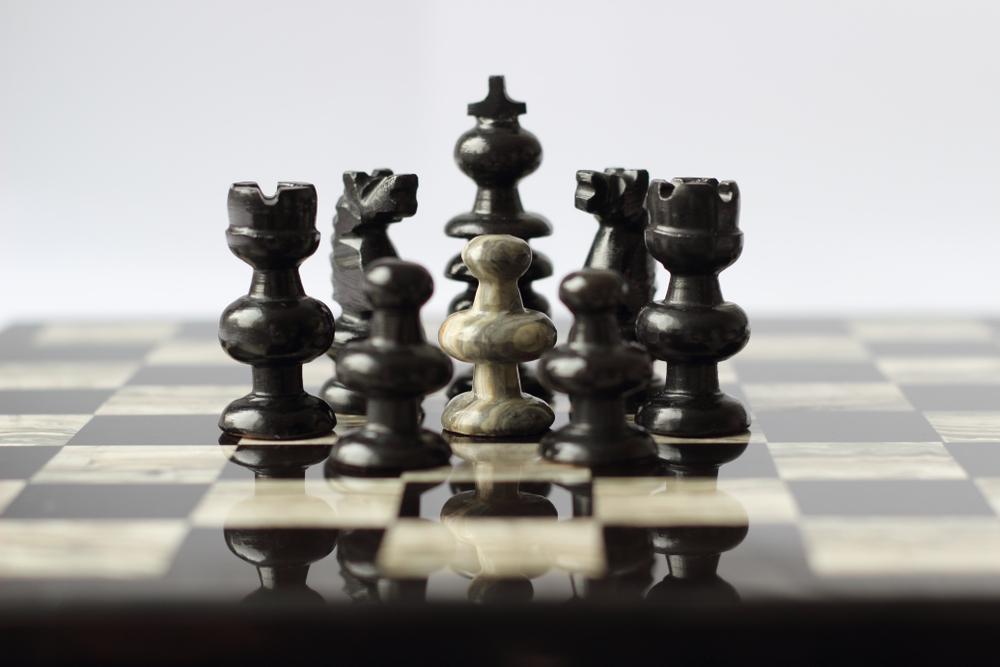
When Your Chess Pieces Betray You
We've all heard the cliche that chess is war on 64 squares.
So, if it is a war between two armies, then I assume that the chess pieces are soldiers. And just like in the real world, some soldiers are good and some soldiers are not so good. I bet you know such chess terms as good knight or bad bishop. We even discussed "dead pieces" in this old article.
But some pieces are worse than just bad; they actually help the enemy's army to win the war!
The simplest example is the smothered checkmate.
Black would have won the game if in the final position his rook on g8 or one of the pawns just disappeared, but his own pieces prevent his king's escape.
Whenever I see smothered mate, I cannot help but remember the famous scene of Caesar surrounded by his "friends." I almost hear the king on h8 saying to the rook on g8, "Et tu, Brute?"


Just like in the smothered checkmate, it is quite common that the king gets checkmated because of his own pawn. Here is a basic example:
Back-rank checkmate is a very common tactical idea that becomes possible when pawns restrict their own king. Here is the classic example:
There are really thousands of examples like this, but I bet you already get the picture how pawns can prevent their own king's escape from a mating net.
A pawn protects the enemy king:
If in the previous case pawns helped the enemy to checkmate their own king, here pawns shield the enemy's king from an attack.
Here is an example:
You see, Black would be happy to get rid of his own pawns on a2 and a3, so he could attack White's king, but he cannot do it. That's why sometimes an enemy pawn is a better defender than your own pawn. Your opponent can attack or capture your pawn, but he cannot capture his own pawn!
The Cunningham variation of the king's gambit is based on this concept. Here is a classic game played in this opening:
A pawn prevents a stalemate:
It is a well-known fact that two knights cannot force a win against a lone king. Even though a position where the knights deliver a checkmate is possible, the defense is so simple that in tournament games players usually agree to a draw right away:
Add a pawn and the situation is completely different:
Did you notice that if not for White's pawn it would be a stalemate on move 92? This is precisely the reason why you might want to get rid of such a pawn (the traitor) as quickly as possible!
Look at the following position from a very recent game. What would you play here?
If you realized that the pawn on c5 was a traitor and decided to get rid of it right away, then you can pat yourself on the back. Unfortunately, GM Meier discovered the betrayer too late and all his attempts to get rid of it were hopeless, since his opponent cleverly refused to eliminate the double agent.
It is not very common that your own pawns become traitors, but when it happens the consequences can be pretty bad. I hope knowing this concept helps you prevent situations where your own pieces betray you.



